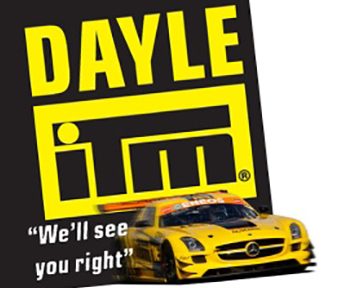Takuma Sato is a two-time winner of the Indy 500.
A veteran of 90 Formula 1 Grands Prix, Sato cycled ahead of Scott Dixon in the final pitstop phase before dancing on a fine line as lap-after-lap his combative defence kept the Kiwi at bay as they ran in formation towards the chequered flag.
The race would end in bitter circumstances as a hefty crash for Spencer Pigot five tours from home saw the field cruise behind the Safety Car to the finish.
It was a disappointing result to Dixon who had the pace to win all race, leading from the onset and only to fall away in the dying stages and looked to closed in on Sato in the final few laps.
Indianapolis Motor Speedway will always be a hallowed venue in motorsport; a mecca of sorts. But this year’s race was particularly airy with the circuit closed to all spectators, leaving celebrations curtailed and the allure of the race retrenched.
Nonetheless, Sato’s victory means everything, perhaps even more, for the 43-year-old who joins an illustrious list of dual winners of the great race.
An electric start by the Iceman gave him the run on Andretti at Turn 1, and while many Kiwis would have been unable to see the overtake, Dixon emerged from the short chute in the lead as the pole-sitter slumped to third.
Ed Carpenter was the only causality in a clean opening lap as the series veteran returned to pitlane with suspected damage. But there was drama to come a few laps later as James Davison comes to an abrupt halt at Turn 4 with flames licking the front of the Dayle Coyne Racing Honda.

Replays spied Davison suffering a scary explosion in the rear which led to an unrestrained fire bursting from his right front wheel.
A small group of drivers opted to pit under yellow including Simon Pagenaud who threw caution to the wind in a bold attempt to recover from a disappointing qualifying session for Penske.
A composed Dixon led the field to the restart on Lap 13 with Ryan Hunter-Reay and Sato in tow. Andretti had fallen behind James Hinchcliffe and was running fifth under threat from former winner Alexander Rossi.
The race’s second caution was waved on Lap 25 as the sister Chip Ganassi Honda of Marcus Ericsson collected the wall at Turn 1, a small oil fire breaking out as the frustrated Swede lifted himself from the stricken wreck.
His teammate’s accident played into the hands of Dixon who made the call to fit fresh tyres and fuel, winning the race off pitroad with most of the field, including a hard-charging Rossi, making their first pitstops.
The Kiwi took the restart on Lap 31 in eighth with Rossi in tandem. The pair then scythed their way past Brit Ben Hanley three laps later.

Courtesy of their earlier pitstops, Pagenaud and Oliver Askew had filed through to the race lead with both making their second stops on Lap 49, giving the front two spots back to Dixon and Rossi.
Rossi looked to get the undercut on Dixon but the Andretti Autosports crew made too late of a call to get their man into pitlane and the 2016 race victor made a hesitant decision to carry on for another lap.
Dixon exploited his nearest rival’s error and cycled pitlane himself on Lap 64. A rapid 6.2-second pitstop for the Kiwi allowed him to emerge in the lead, seven seconds up the road from Rossi and ahead of Pagenaud, Askew and Helio Castroneves who were all running the alternative pit strategy.
Sato, another ex-victor of the great race, then bullied his way past Rossi on Lap 74 to sit fourth and the leading driver behind Dixon who had pedalled himself to the front of the pack on Lap 81. But that margin between the two was reduced to nil when Canadian rookie Dalton Kellett found concrete at Turn 4 to bring out the race’s third caution.
The Kiwi utilised the yellow to pit on Lap 98 and rejoined the race down in sixth but got his break when those running the alternative strategy also stopped under caution a handful of laps later. Ultimately, the overall result for Dixon was a loss of his tidy advantage over Sato but maintained track position at the head of the queue.
However, the restart was punctuated by a vicious crash involving Oliver Askew and Conor Daly. The latter lit up in a fog of smoke as he spun on the exit at Turn 4. The consequent smoke screen masked the incident and caught out an unsuspecting Askew who veered into the concrete barrier at a pernicious angle.
The restart was critical and a shrewd Dixon intentionally gave the lead to a hard-charging Rossi in a bid to save fuel in the draft. Meanwhile, Sato had fallen to fourth after a daring move by rookie Pato O’Ward along the short chute between turns 1 and 2.
The Kiwi and Rossi began playing a tactical match of hopscotch as both drivers’ engineers begged their drivers to save fuel, aware that the driver leading would not be able to make it to the end on two more stops.
However, just as the duel between Dixon and Rossi began to intensify, Alex Palou’s spectacular rookie Indy 500 campaign ended abruptly in a crash at Turn 2.
The yellow came short of the necessary pit window and demanded a splash and dash in the closing laps, but the vast majority of the field made the venture to pitroad for a top up of fuel.
A lightning stop by Chip Ganassi gave Dixon the theoretical lead of the race which was headed by teammate Felix Rosenqvist. Behind there was strife for Rossi who was released into the path of Sato and was sentenced with an unsafe release penalty, dropping the Andretti Autosport Honda to the rear of the field.
Dixon was second from the restart but with a gaggle of lapped traffic between himself and teammate Rosenqvist. But the Kiwi was on a charge and within one tour of 2.5-mile oval had elevated himself to the lead with a massive three-second trump on the challenging pack.
Rossi’s turbulent day was curtailed prematurely when he got loose at Turn 2, veering into the wall to deploy another caution. One of the race’s favourites was eliminated on the spot and swayed the momentum of the race with drivers able to save fuel and bunched the field up once again.
Dixon lead the queue to the green flag for the restart but fell behind Takuma Sato to buy some more fuel saving so as to make it to the finish on one more pitstop.
Sato was the first to stop on Lap 169 with Dixon responding a lap later, emerging ahead of Sato despite a minor scare with fitting the left-rear tyre. But a great run on fresh tyres gave the Japanese racer the push he needed to power around the outside of Dixon at Turn 1 to steal the lead with a little over 20 laps remaining.
Dixon pursued after Sato with all his expertise, but the Rahal Letterman Racing proficiently navigated through lapped traffic to hold a one-second advantage with five laps remaining. Then, as if on cue, the race’s final caution came out as Spencer Pigot suffered a horrific crash at Turn 4, ricocheting back into the pitlane entry barrier.
From there the race was over. No red flag was waved and the field moseyed behind the Safety Car for the remaining laps.
Sato now joins an illustrious list of dual Indy 500 victors, becoming the 20th driver in history to win the great race on multiple occasions.
For Dixon, his championship challenge is strengthened but he undoubtedly leaves Indy having led 111 laps with a bitter taste in his mouth as he reflects on the one that got away.

















